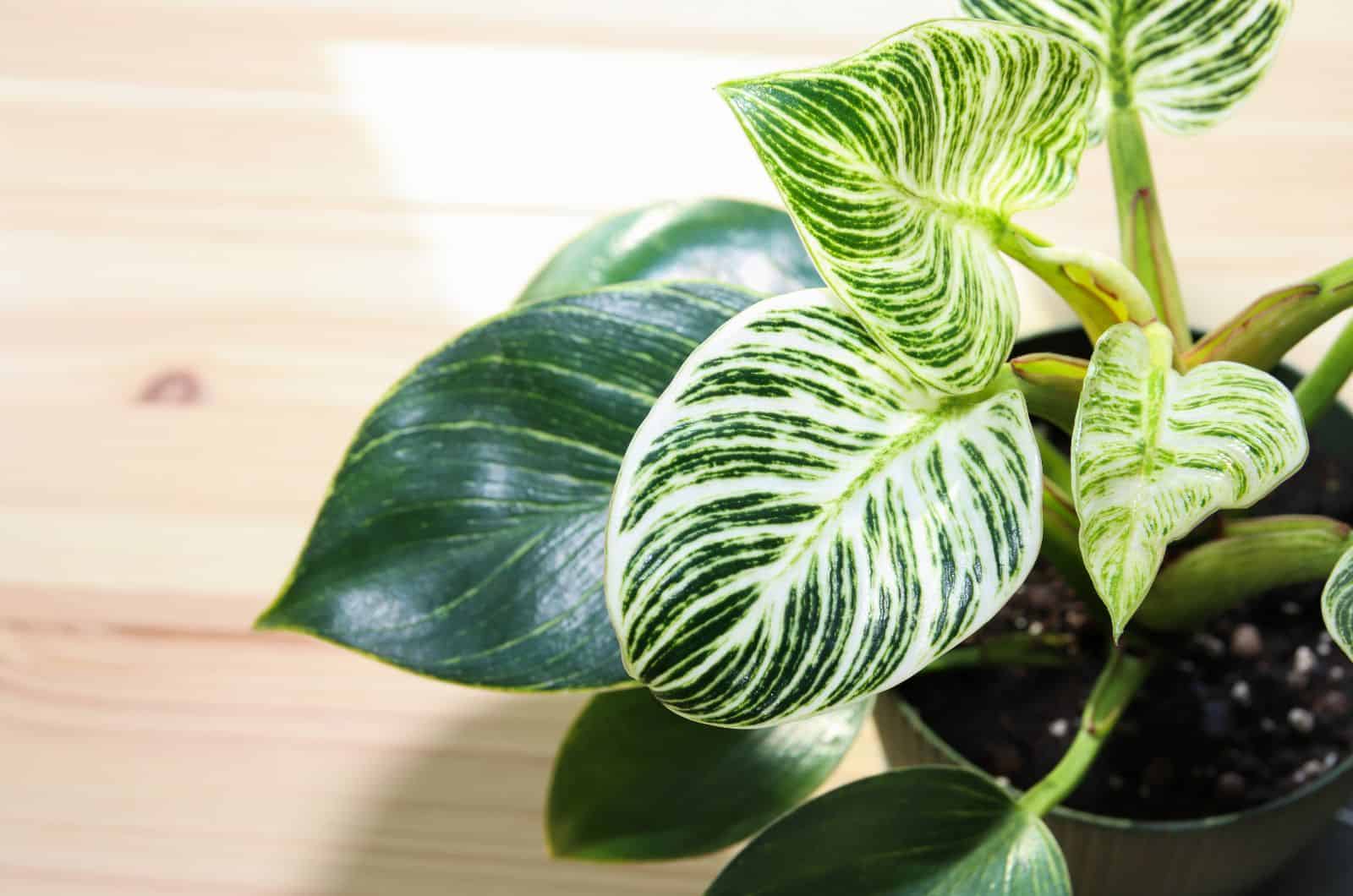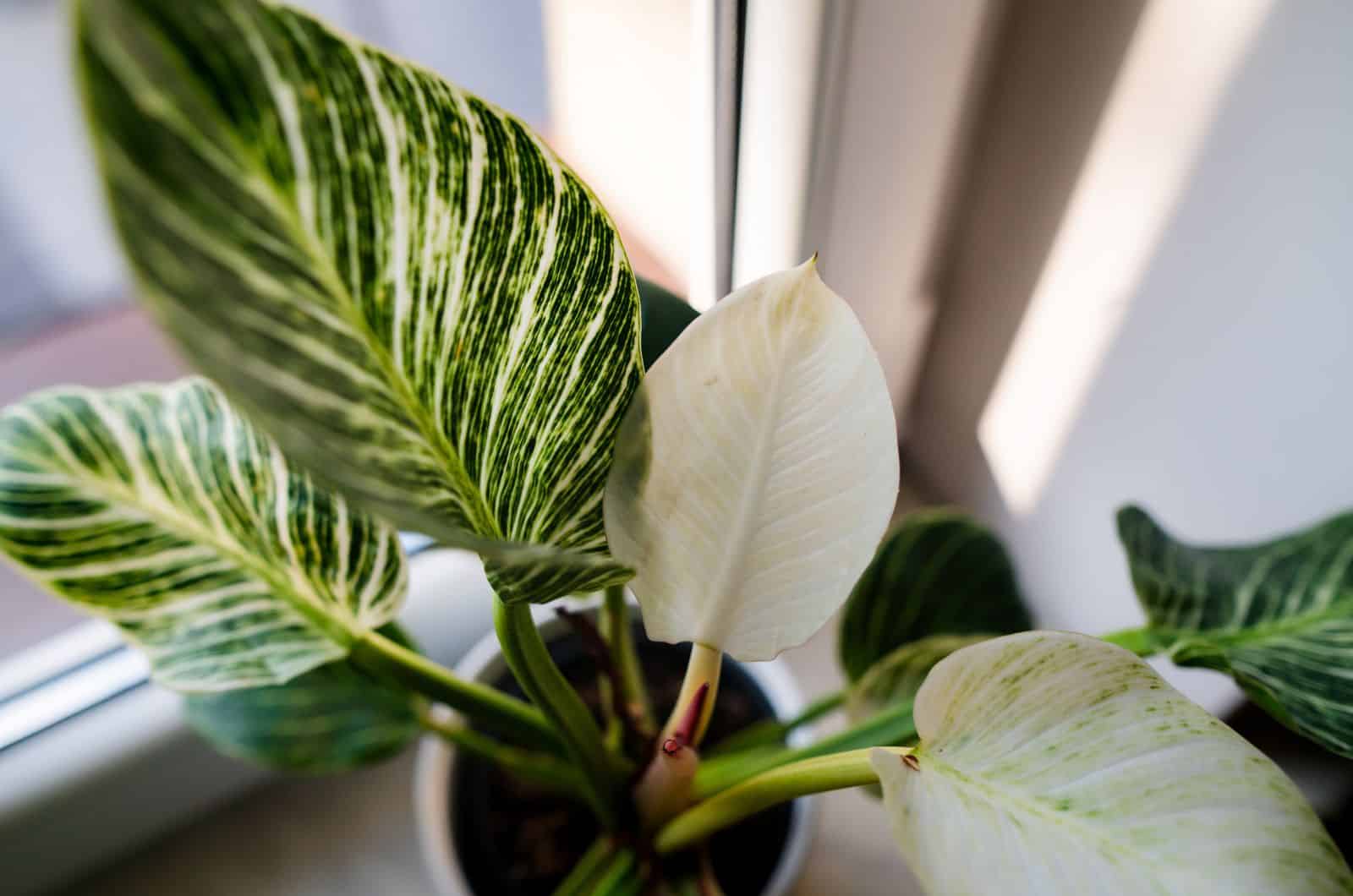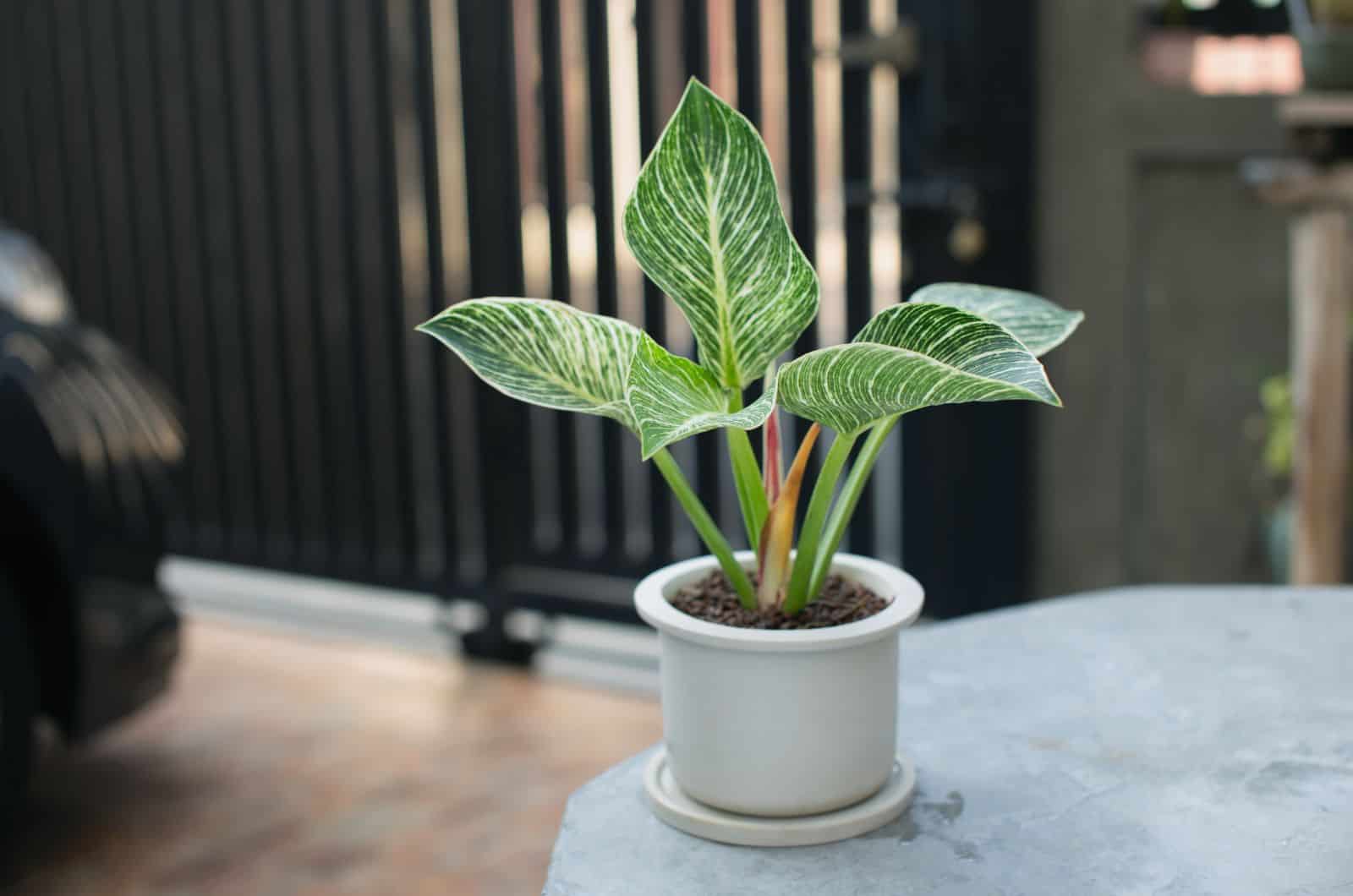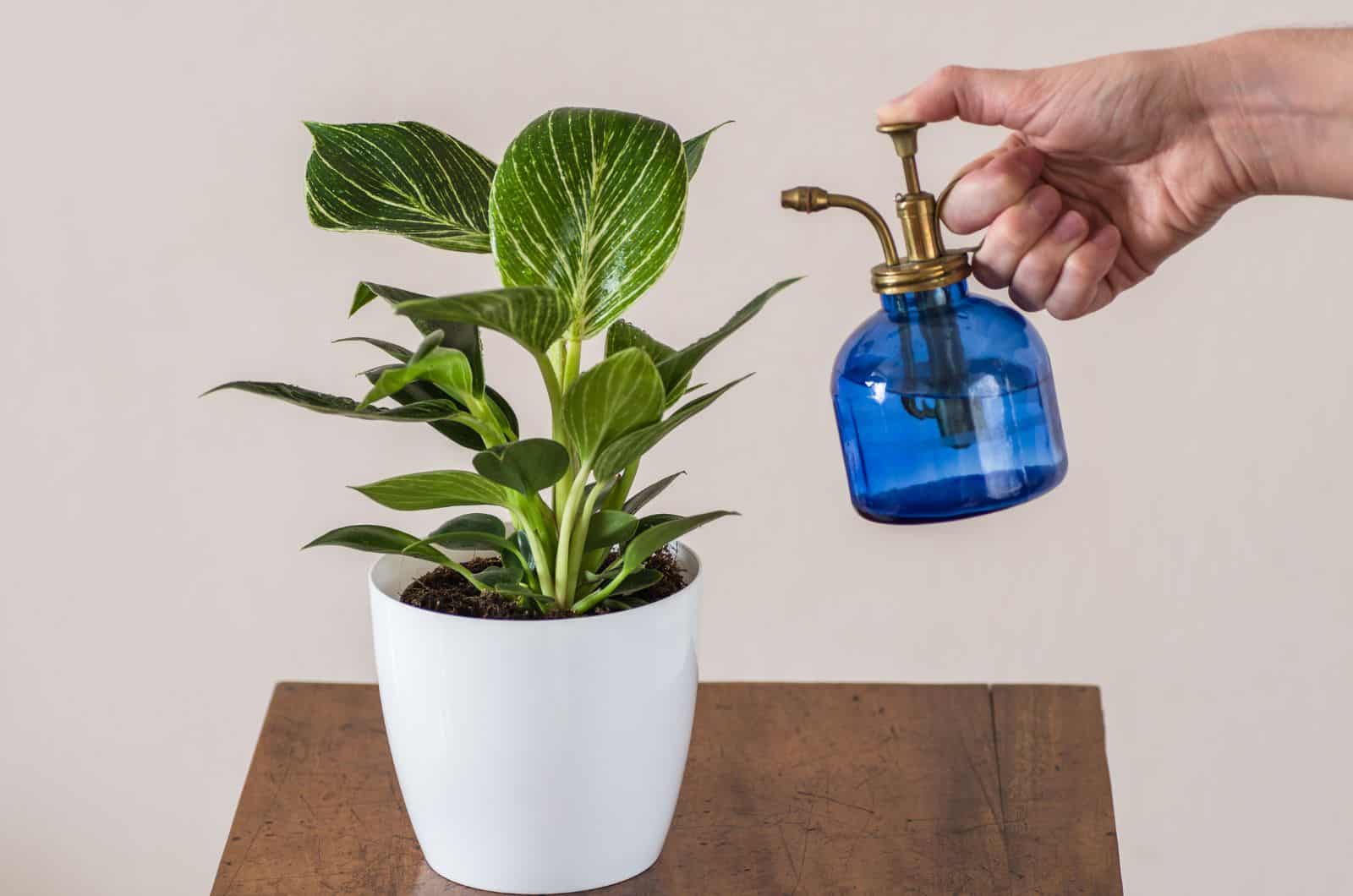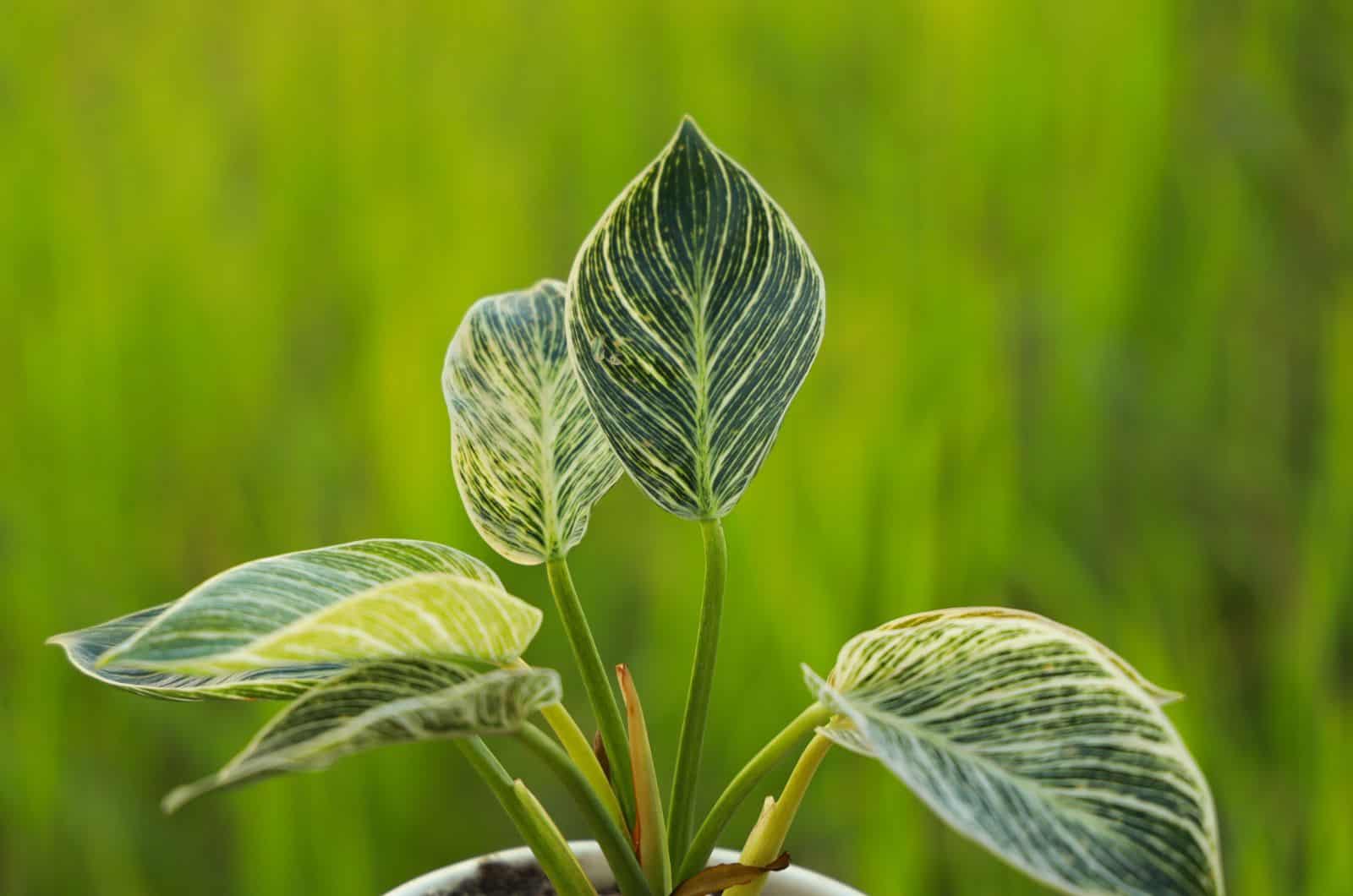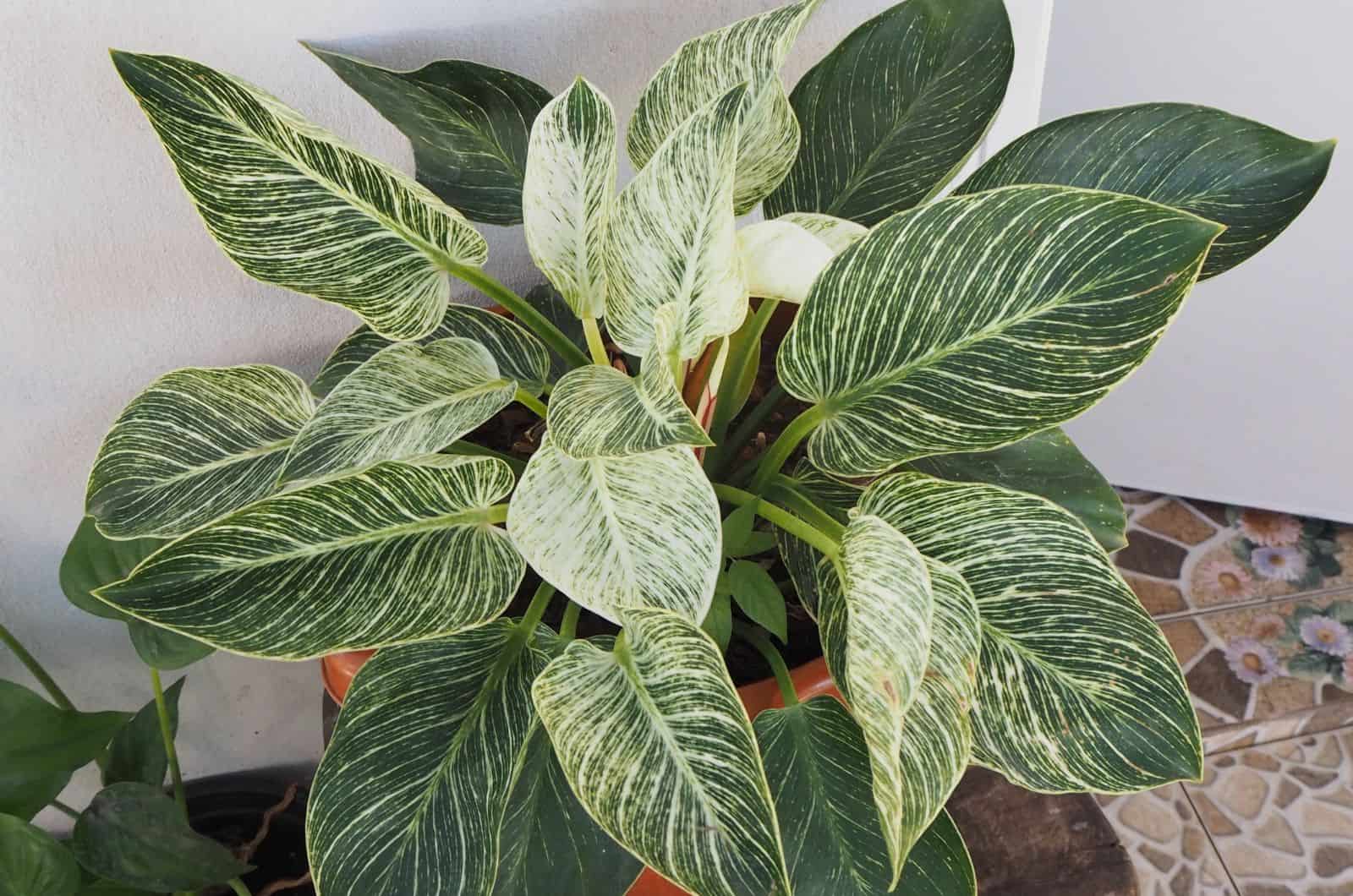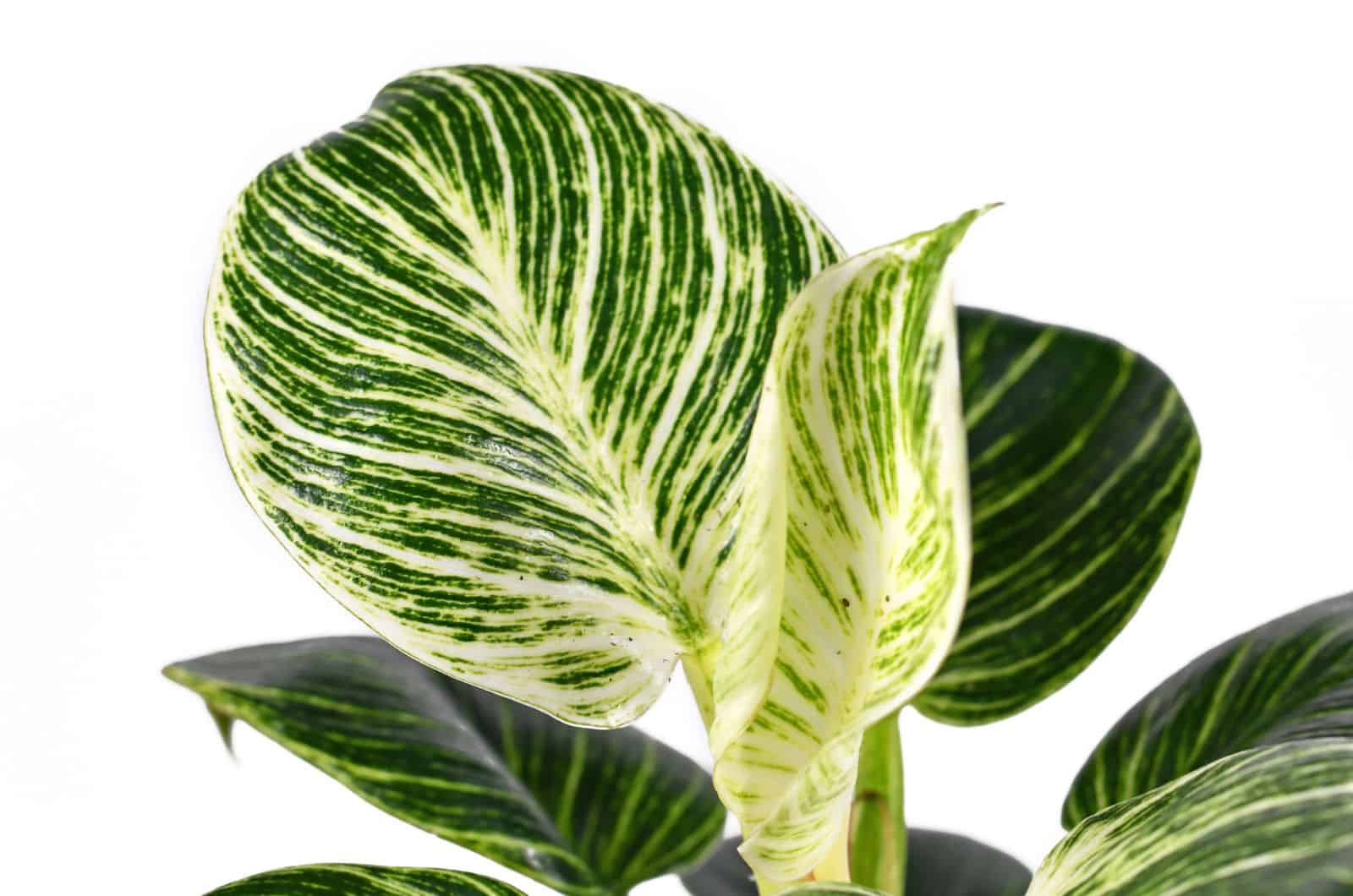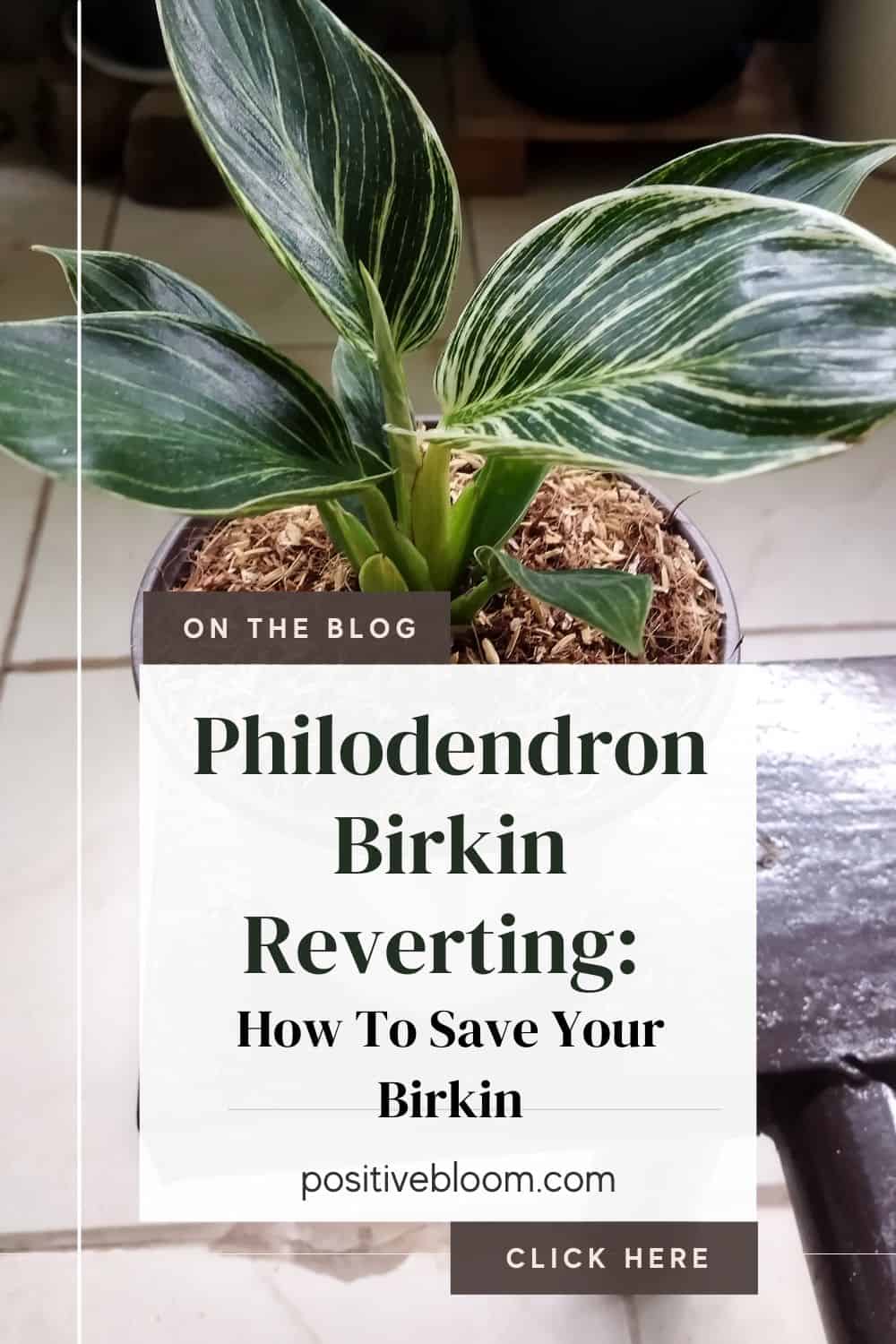The Philodendron Birkin plant is a very special houseplant… I mean, we have all heard about luxurious Birkin bags, right?
Don’t worry, this lovely plant will not cost you $50,000, but you will still get a Birkin!
What’s so special about this Philodendron Birkin plant is that it is a self-heading hybrid, which means that it is not vining like other types of Philos. It also produces lovely variegated leaves that can fit perfectly into any home decor.
However, you might have to deal with your Philodendron Birkin reverting. This is a common issue that occurs with this Philodendron species, but luckily, it is easily fixable.
So, if you want to know more about this beauty and how to deal with it reverting, keep reading!
Philodendron Birkin Reverting: The Main Issues
The main reasons this plant is so popular are those beautiful Philodendron Birkin leaves — the white stripes on the dark green leaves are simply breathtaking. Their variegations are also referred to as chimeric, and have veiny streaks running along their body and edge.
The reverting process is associated with the loss of variegation, so you only end up with dark green leaves. Once reverted, the plant looks exactly like its parent, or the so-called Philodendron Rojo Congo.
In some scenarios, the once-variegated plant might end up with yellowing leaves as well. The leaves don’t necessarily turn dark green — it all comes down to the plant’s pigment.
This is a common problem, especially because these plants are hybrids, so their appearances can vary. In fact, the variegated forms of leaves have cellular mutations, which is why they appear chimeric. Certain consequences can lead to a plant expressing a normal gene, which is a completely green leaf in this case.
So, what might these consequences be?
It’s quite simple — any irregularities in Philodendron Birkin care might lead to the reverting process. However, the main issues are definitely inadequate watering, not enough light, sudden temperature changes, and lack of nutrients.
Let’s look at it in more detail.
1. Inadequate Watering
Overwatering and underwatering might be the reasons your Philodendron Birkin is reverting. In the case of underwatering, the plant doesn’t get enough water, which results in stunted growth and loss of variegations.
On the contrary, if you keep giving too much water than it needs, you will end up with overwatering issues. If you notice that the leaves are turning yellow, then you should check the roots because it can be a sign of root rot — a fungal disease that can completely ruin your plant.
Improper drainage, wrong potting soil, too much or too little water, an inadequate pot, or insufficient humidity are all reasons why your plant might be having watering issues.
2. Not Enough Light
Almost all plant enthusiasts have witnessed plants losing variegations due to low light conditions. Getting the right light conditions can sometimes be difficult, especially with these sensitive plants that get easily damaged.
If you keep your Philodendron Birkin in low light, then the older leaves will start losing variegations around the base first. After some time, the entire leaf will lose variegations.
This Philo likes bright indirect light. It shouldn’t be kept in direct sunlight either, especially during hot summer days because the leaves might get sunburnt!
3. Nutrient Deficiency
Philos are not heavy feeders, though they need some specific nutrients during the growing season to thrive and grow. These nutrients include phosphorus and nitrogen specifically, as they are needed for leaf growth and development.
If you are using the wrong fertilizer or you are not fertilizing your plant at all, then you can say goodbye to those lovely white stripes on the leaves!
Be careful, though, because if you use too much fertilizer there will be chemical buildup in the soil, which causes other issues such as stunted growth and underwatering.
4. Wrong Temperature & Humidity
The Philodendron Birkin is a rare Philodendron species that requires a steady temperature between 55 to 85 degrees Fahrenheit. Temperature fluctuations can easily affect your plant and make it revert. Therefore, you should keep it in a place with a steady temperature.
Avoid drafty windows, radiators, ACs, vents, and fireplaces.
The same thing applies if the temperature is too high or too low, though this is accompanied by some other issues in addition to the plant losing variegations.
Insufficient humidity can cause similar outcomes. If the humidity levels are too high, then the plant might suffer from similar issues as overwatering. This includes losing variegations and leaves turning yellow.
All of this can be avoided by following the right plant care. Keep reading to find out how to properly take care of this Birkin beauty!
Philodendron Birkin Plant Care
You have probably already figured out that this Philo needs some extra love to thrive. However, its plant care is not much different than any other Philodendron. After all, they are tropical plants that absolutely love warm temperatures and moisture!
You can group plants with similar plant care — for instance, you can grow Monstera varieties together with different types of Pothos and Philodendrons.
Now, let’s talk about Philodendron Birkin plant care.
1. Water Requirements
Philodendrons like to have moist soil. However, there is a fine line between soggy and moist. You will have to be careful not to overwater your Philo.
I would recommend you always check if the topsoil has dried out before watering again. Regarding watering methods, I strongly advise bottom watering for your Philodendron Birkin so the soil will be able to securely and gradually absorb water.
Pay attention to the seasons; water more frequently in the spring and summer, and less frequently in the winter during dormancy. You should also get a pot with drainage holes in the bottom — these are crucial for removing excess water.
2. Soil Requirements
Aeration, drainage, and water retention are the three key considerations for selecting the ideal soil for a Philodendron Birkin.
As a result, you’ll need potting soil that has permeable components like orchid bark. Additionally, you’ll require drainage-enhancing elements like perlite or pumice because well-draining soil is crucial here. Finally, you need materials that effectively hold onto water, such as peat or vermiculite.
You have the option of buying a fully prepared potting mixture or making your own by mixing these components into the potting soil.
3. Temperature Requirements
The Philodendron Birkin flourishes in environments with temperatures between 65 and 85 degrees Fahrenheit.
The primary cause of indoor temperature problems are drafts. Both hot and cold drafts can cause issues like reverting.
The Birkin plant’s leaves can become brown due to heated drafts produced by fireplaces, radiators, and heating vents.
Stunted growth can also be brought on by air conditioners, drafty windows, or cooling vents.
4. Humidity Requirements
Because of its waxy leaves, this Philodendron plant is easier to maintain in terms of humidity. Although it can withstand a range of humidity conditions, you can’t assume that the growth rate will be the same everywhere.
For instance, maintaining humidity levels of 70% would be ideal since humidity levels of less than 40% could result in the development of brown leaf tips and edges.
The optimal environment for the growth of tropical plants is one that mimics their natural habitat, which is a rather humid one.
If you can’t guarantee enough humidity, think about using a humidifier to raise the humidity level. Organizing your plants into groups will also increase humidity. Place pothos or succulents next to your Philodendron if you grow them.
5. Fertilization Requirements
During the growing season, I advise fertilizing your Philodendron Birkin once or twice a month to keep your plant growing.
For indoor plants, you can use balanced fertilizer that is diluted to half-strength. You should use nitrogen fertilizer if your plant is suffering from nitrogen deficiency.
When applying this kind of fertilizer, pay close attention to the directions on the label. You can always feed your Birkin plant organic materials like worm castings.
6. Repotting
Because the Philodendron Birkin grows quickly, it will benefit from frequent repotting.
When repotting, always use brand-new potting soil. The “soil” section above has the ideal potting mixture for this variety.
Please don’t rip your Birkin out of its pot; instead, tilt it to one side and gently tap the container to help the plant slip out.
Once you’ve loosened up the soil, look at the roots; roots that are discolored is a sign of infection.
I advise using a pot that’s 2 inches larger than the previous one.
7. Propagation
Propagating the Philodendron Birkin is relatively easy. There are three methods that you can use — stem cuttings, air layering, or root division.
A mature Philodendron Birkin is undoubtedly necessary. Remember that the plant, as well as any components you use to develop new plants, must be in good health.
Always use sterile tools when propagating, as well as fresh soil and new pots. Carefully follow the plant care guide to make sure that your plant is going to grow and develop.
To Sum Up
Philodendron Birkin reverting is an unfortunate situation that you may have to deal with if you don’t provide your plant with the best possible plant care!
Though you have to be extremely careful, it is totally worth it, especially when you see those lovely leaves with white variegations. They look absolutely breathtaking.
If you love Philodendrons, then you should definitely get yourself a Birkin!
I hope this article was helpful.
Until next time!
Like this post? Share or pin it for later!

